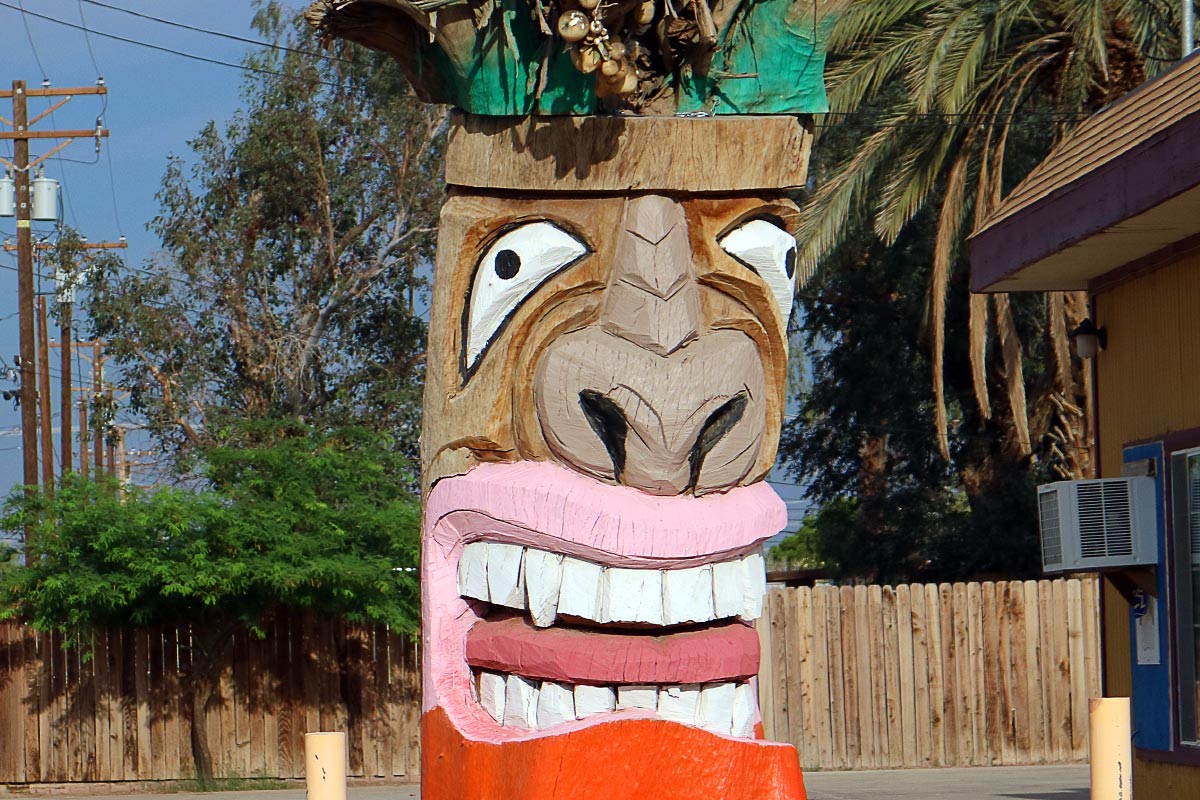
I've been in the country much too long
Trying to be a farmer
But nothing that I planted ever seemed to grow
Train comin 'round the bend
—The Velvet Underground
The surprises that driving through the wilds of southern California offer you are head-spinning. Literally – you’ll be jerking your neck back and forth and at times audibly gasping or cooing in wonder. This was how it was driving from Joshua Tree National Park to Yuma, AZ along the scenic route.
I already wrote about this phenomenon a couple of days ago, when this diabetes fundraising road trip took me and my travel partner Masayo through the San Bernardino Mountains to Joshua Tree NP’s western entrance. Going from hilly lowlands to a shimmering blue lake in snow-patched fir tree mountains to flat, craggy desert in the space of about three hours, I thought that California had shown me everything.
But this latest excursion demonstrated that I hadn’t seen anything yet – and southern California still had more in store for the open-eyed and relaxed-pace traveler.
Exiting Joshua Tree National Park through its southern entrance (where, incidentally, there is no ticket gate or visitor center and you can just waltz on in), most people will immediately get on I-10 that goes east-west. But we went straight along a small road towards Salton Sea.
Rocking in a box canyon
The road, called Box Canyon Road, turned out to live up to its name: a box canyon is a small-sized canyon that in times past people would fence off at one end and use as corrals for livestock. In other words, lots of tall and impenetrable rock walls.
We weren’t prepared for what we saw as we followed a sharp curve in the road and suddenly found ourselves – the only car around – darting between sheer cliffs far overhead, made of pure rock with no vegetation. Jagged lines, running generally horizontally or diagonally, told the story of eons of weather and geological activity.
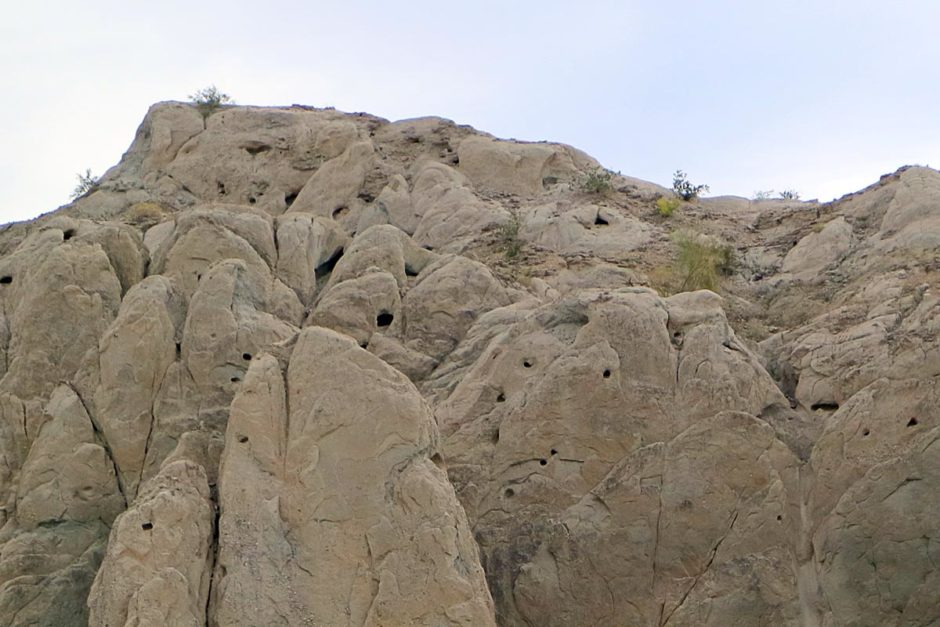
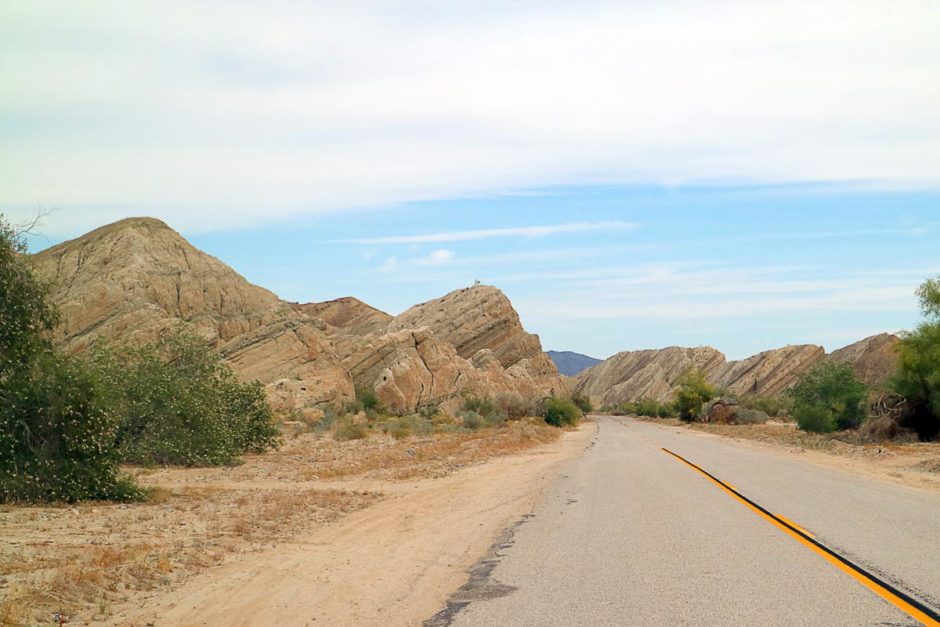
This box canyon is about ten miles from Joshua Tree, yet it is totally different. The sky was cloudy and it was late afternoon, so the sun wasn’t baking everything. The effect was to give these rock walls a near-seeming ceiling of clouds, and when we pulled over on a straightaway for photos it felt like we were in a large kind of outdoor room.
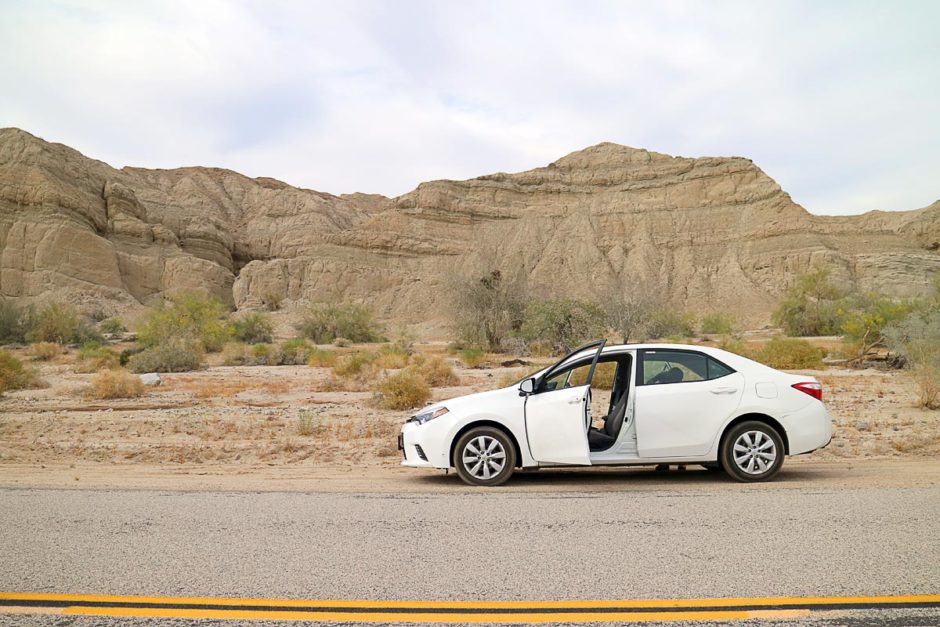
Wine, sir?
Gaping at the impressive and curious rock slabs around us, Masayo and I both inhaled suddenly when, unwittingly, we rounded a bend and glimpsed something altogether different: the big, low, flat Salton Sea, way off in the distance. Just like that, the box canyon was over.
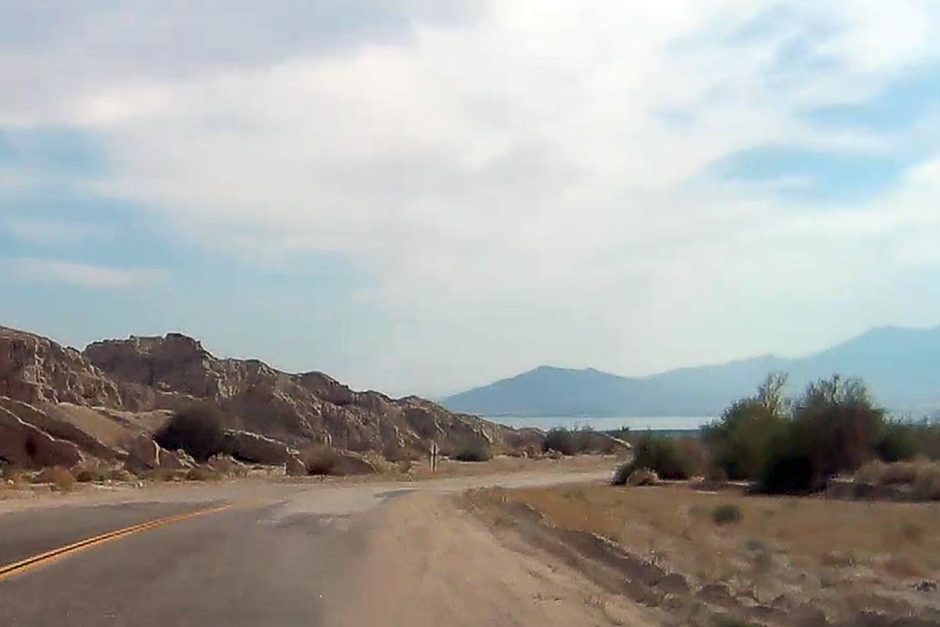
Before reaching the sea, though, we passed through the town of Mecca and were surprised to find vast fields of healthy-looking grapevines. How bountiful vineyards could thrive so close to the dusty, grey little canyon was beyond us.
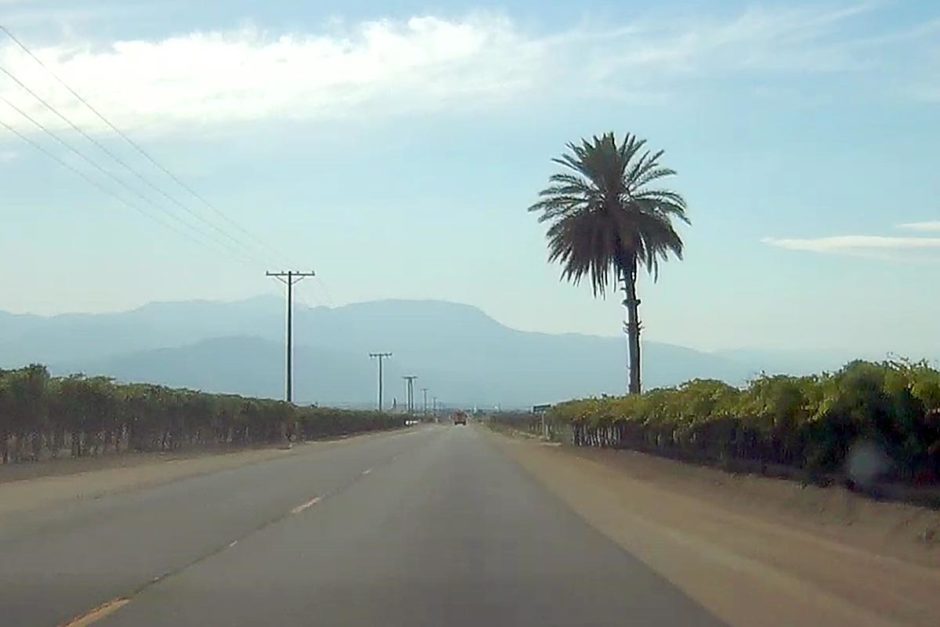
Mecca was charming, a small community that seems to revolve around farming and agriculture. I stopped at a store to buy ice for the cooler (still figuring out how to keep three months’ worth of insulin safely cool) and everyone inside was speaking Spanish. When I approached the counter the girl switched to perfect English.
Ghost resorts along the Salton Sea
From Mecca we were heading down Highway 111 along the shore of Salton Sea. The surface of these large flat waters is 235 feet below sea level, and at its lowest point is just five feet higher than Death Valley’s lowest point. It once boasted resort towns where the well-heeled could relax and enjoy the unique beauty of the region, but pollution and increasing salinity killed off much of the fish life, and the desire of people to make the journey here. Now the highway is littered with the shells of disused buildings, boarded-up and overgrown, their once garish paint jobs faded by decades sitting inert in the sun.
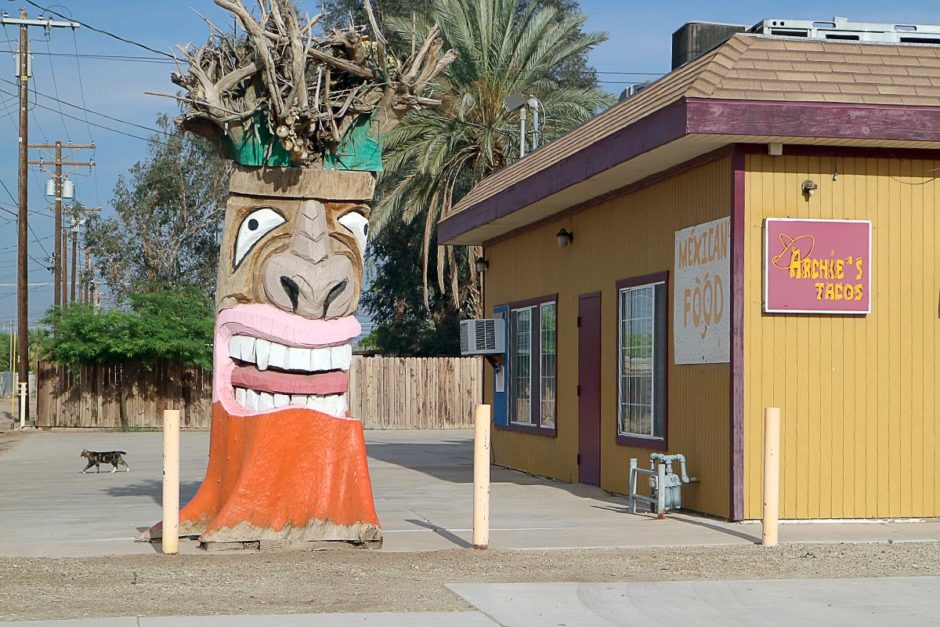
Archie’s Tacos, for one, seems to still thrive in a community on the Salton Sea shore.
The drive is still nice, though. Mostly long and straight, you pass over dozens of washes and the occasional long (long) train passes by on its way towards Mecca. There weren’t many on the road when we were there and the sky was still a little overcast – it was like the walls of the box canyon had fallen away but the ceiling was still there: endless space to the sides but a barrier just over our heads.
Perhaps like the once-popular resort town themselves – a lot of promise within reach, but limited by the unseen forces of fate.
The interstate to… Africa?
That was all exciting, we though, as we pulled onto I-8 towards Arizona. This was a long, flat road, as interstates often will be, but to be honest it wasn’t all that different than other roads in the area. Paved passages are few and far between in this part of the country, and it is too unfeasible to be too strict about my “no interstates” rule for this trip. (And it’s not just me – this is one of the few areas in the country where bicycles are allowed on the interstate, because there’s no other way for them to go.)
As we reached the edge of California we got our final and biggest surprise of the day: on either side of the road were great stretches of sand dunes. Not dusty hills that resemble sand dunes, but actual, Sahara-esque mounds of wind-blown brown glitter. At some points dune buggies raced up and down hills; at others, electrical poles were the only thing stuck in the hot-looking dunes.
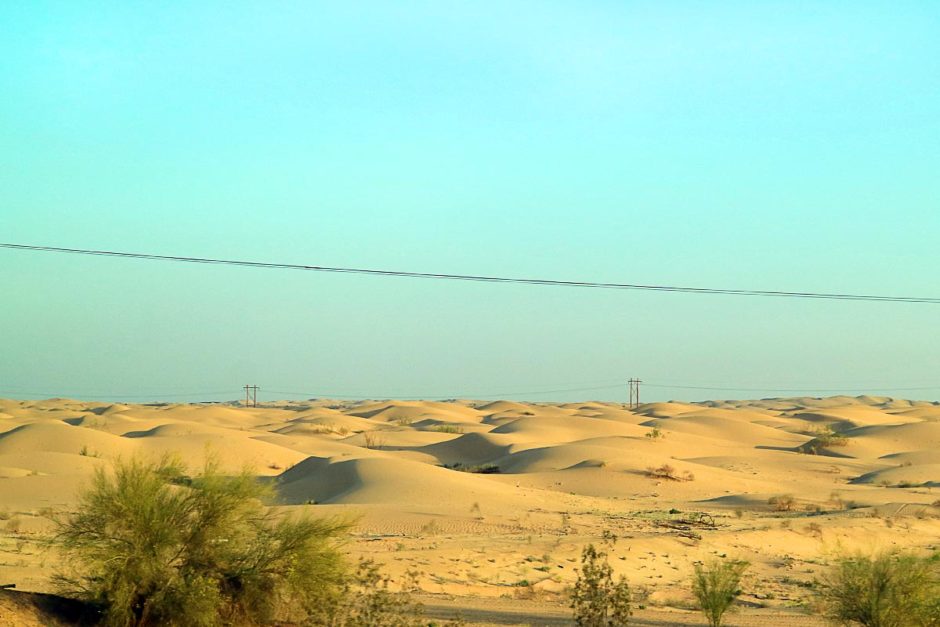
Neither of us had any idea the Algodones Dunes even existed, so it was quite a shock when we found ourselves in the middle of them. It turns out that they stretch a distance of 40 by 5 miles or so.
I never would have guessed that California could show us so much in such a short space of time, and I certainly never dreamed I’d end up driving on an American interstate through the western Sahara Desert. By the time we pulled into our motel in Yuma, Arizona we felt as if we’d been around the world just since leaving Joshua Tree earlier that afternoon.
And thanks to southern California, we really had.
In ‘n’ Out like a shot
I’ve long heard of a west coast hamburger chain called In ‘n ‘Out Burger, but have never eaten there. We tried one in Yuma, Arizona finally; after confusing the poor lady at the drive-in window with my tiredness-influenced ineptness, we took our food back to the motel and tucked in.
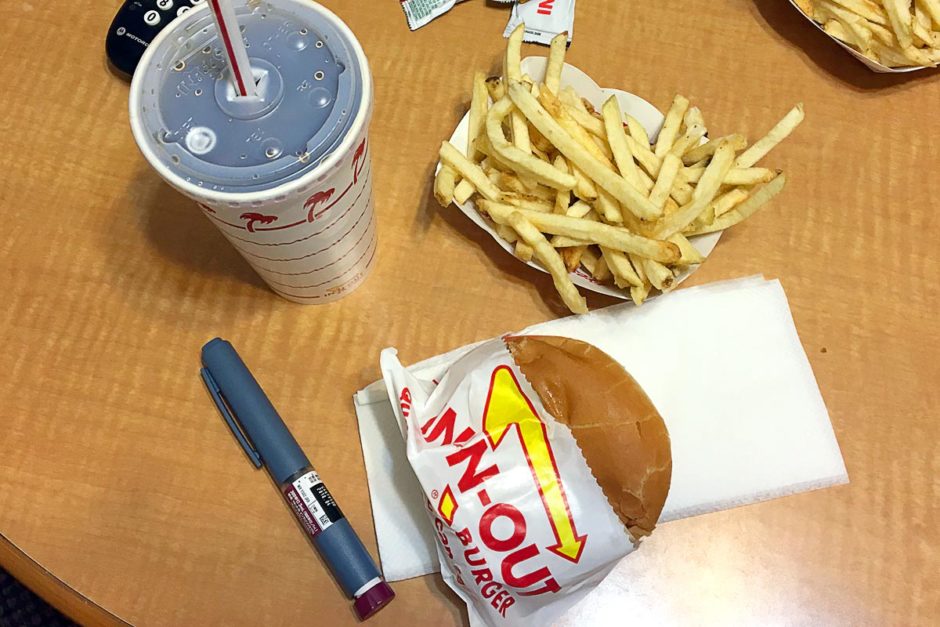
It was fine, nothing special but passable. The best part was that I could look up the carbohydrate content of it online. One thing that diabetics will like about chain restaurants like this.
I also had a cinnamon roll we swiped from the breakfast buffet. High-carb meal but a smart Humalog dose took care of it with no problem: I was 180 a few hours later, and woke up to an 85 the next morning.
Would that hamburger and fries and cinnamon roll meals were always that easy. I credit the omniscient and beneficent travel gods for buoying my spirit and making my blood receptive to working out the differences between glucose and insulin.
Thanks for reading. Suggested:
- Share:
- Read: Day 8: A lizard beckons us towards ancient desert petroglyphs
- Join: Free email newsletter (info and early video access)
- Support: Patreon (much earlier video access and other perks)

Support independent travel content
You can support my work via Patreon. Get early links to new videos, shout-outs in my videos, and other perks for as little as $1/month.
Your support helps me make more videos and bring you travels from interesting and lesser-known places. Join us! See details, perks, and support tiers at patreon.com/t1dwanderer. Thanks!
Want more? Get the free newsletter
Join us! Sign up to my email newsletter to receive updates, behind-the-scenes info,
and early links to my new YouTube videos before everyone else
